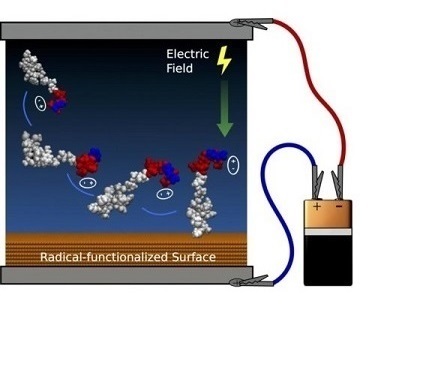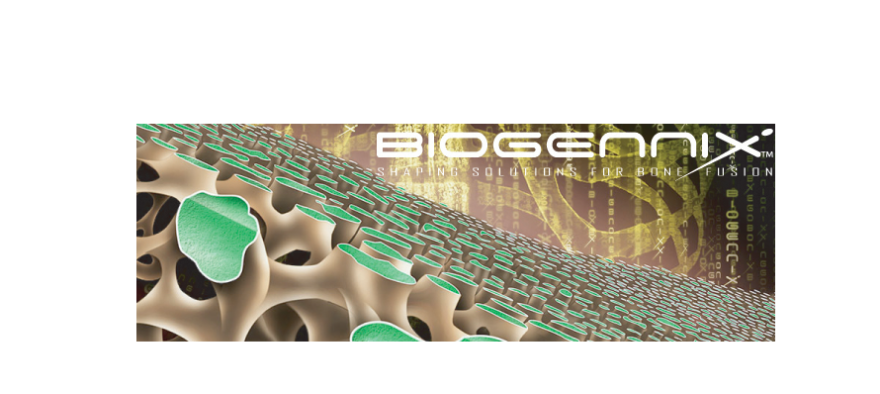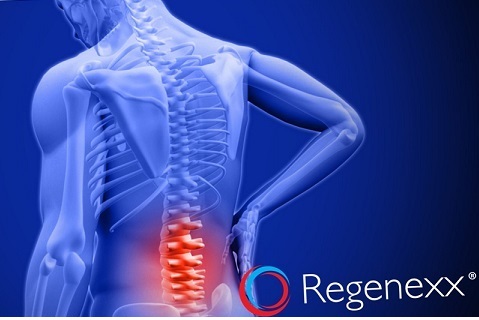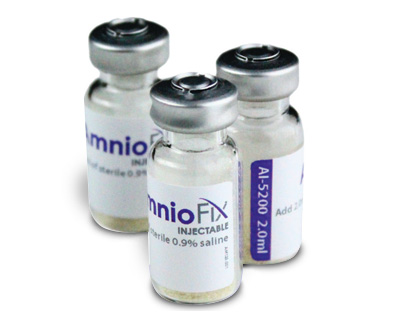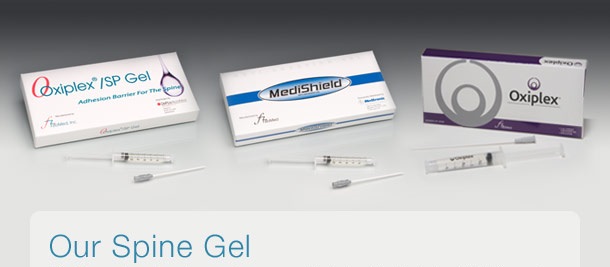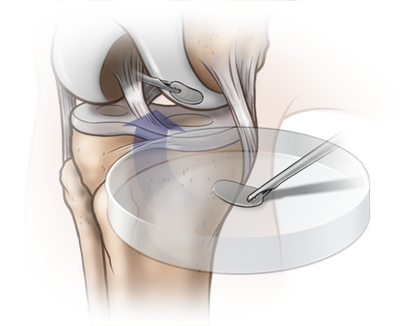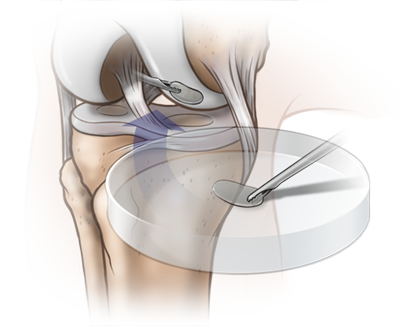WALTHAM, Mass., Dec. 21, 2017 (GLOBE NEWSWIRE) — Histogenics Corporation (Histogenics) (Nasdaq:HSGX), a leader in the development of restorative cell therapies that may offer rapid-onset pain relief and restored function, announced that it has entered into an agreement with MEDINET Co., Ltd. (MEDINET), a pioneering leader in the development and commercialization of cancer immuno-cell therapy technologies, for the development and commercialization of NeoCart® for the Japanese market.
“This transformative collaboration for Histogenics is a clear validation of the value NeoCart potentially provides to the physicians and patients who suffer from painful cartilage defects and related loss of function. MEDINET is one of the leaders of the burgeoning regenerative medicine sector in Japan, with strong capabilities in development and manufacturing of cell therapy products. We believe their recent initiatives to further develop their therapeutic capabilities with the addition of innovative products such as NeoCart will provide a rapid entry into the Japanese market,” stated Adam Gridley, President and Chief Executive Officer of Histogenics. “Our ability to leverage our long clinical and translational medicine history in the U.S. in markets such as Japan was a first step in bringing NeoCart to other regions, and we look forward to expanding our global presence more broadly in 2018 into other potential territories in Asia and Europe.”
Histogenics’ formal consultations with the Office of Cellular and Tissue-based Products of the Japan Pharmaceuticals and Medical Devices Agency (the PMDA) concluded in the second quarter of 2017 and the positive conclusion of those consultations played an integral role in enabling this collaboration. Formal feedback from the PMDA regarding the development and approval pathway for NeoCart in Japan included:
- A 30-patient, one-year confirmatory clinical trial in Japanese patients, comparing NeoCart to microfracture, would be sufficient for applying for full Marketing and Manufacturing Authorization in Japan in conjunction with data from Histogenics’ fully enrolled U.S. Phase 3 clinical trial.
- NeoCart would be regulated as a Regenerative Medical Product, as covered by the recently enacted laws in Japan, and Histogenics can supply the confirmatory clinical trial from the U.S. using the current good manufacturing process (cGMP) for NeoCart.
“I am excited about the potential to bring this exciting therapy to Japanese patients and physicians through this new partnership,” stated Dr. Shuichi Mizuno, Ph.D., a scientific founder of NeoCart, Assistant Professor, Orthopedic Surgery, Brigham and Women’s Hospital, and Harvard Medical School, in whose laboratory the underlying technology for NeoCart was discovered.
Japanese Cartilage Repair Market
The Japanese cartilage repair market is estimated to be the second largest market in the world after the U.S. and it is estimated that there may be at least 10,000 NeoCart treatments per year. If left untreated, cartilage defects may result in Osteoarthritis (OA) and ultimately, total knee replacements. Market forecasts predict that the number of OA patients in Japan aged 40 and older amounts to more than 25 million and is expected to accelerate as the population ages.
In the first half of 2017, Histogenics conducted market research in Japan with approximately 80 leading surgeons with the findings summarized below:
- Approximately 60% of patients with knee cartilage defects are either not treated, or treated solely for temporary pain relief.
- Approximately 60-70% of patients with knee cartilage defects that are left untreated will likely progress to OA in the knee.
- Cartilage defects are believed to have caused OA in 15-20% of patients suffering from knee OA.
- More than 85% of orthopedic surgeons are not satisfied with the current options to treat knee cartilage defects.
- Approximately 80% of orthopedic surgeons consider early improvement in pain and function to be important and more than half of the surgeons feel they would prescribe NeoCart based on published data.
“This licensing deal has been realized based on our longtime close relationship with Histogenics. I am excited about and proud of, the big challenge to enter into the regenerative medical product market with NeoCart in collaboration with the excellent team of Histogenics,” stated Yoshiji Kimura, Chief Executive Officer of MEDINET. “We believe this restorative cell therapy will contribute to better treatment by the physicians and quality life, of the patients with knee cartilage defects in Japan.”
Locust Walk served as transaction advisor to Histogenics.
Conference Call and Webcast Information
Histogenics’ management will host a conference call on Thursday, December 21, 2017 at 9:00 a.m. ET. A question-and-answer session will follow Histogenics’ remarks. To participate on the live call, please dial 877-930-8064 (domestic) or 253-336-8040 (international) and provide the conference ID: 5982636 five to ten minutes before the start of the call.
A live audio webcast of the presentation will be available via the “Investor Relations” page of the Histogenics website, www.histogenics.com, or by clicking here. A replay of the webcast will be archived on Histogenics’ website for approximately 45 days following the presentation.
About Histogenics Corporation
Histogenics (Nasdaq:HSGX) is a leader in the development of restorative cell therapies that may offer rapid-onset pain relief and restored function. Histogenics’ lead investigational product, NeoCart, is designed to rebuild a patient’s own knee cartilage to treat pain at the source and potentially prevent a patient’s progression to osteoarthritis. NeoCart is one of the most rigorously studied restorative cell therapies for orthopedic use. Histogenics recently completed enrollment of its NeoCart Phase 3 clinical trial and expects to report top-line, one-year superiority data in the third quarter of 2018. NeoCart is designed to perform like articular hyaline cartilage at the time of treatment, and as a result, may provide patients with more rapid pain relief and accelerated recovery as compared to the current standard of care. Histogenics’ technology platform has the potential to be used for a broad range of additional restorative cell therapy indications. For more information on Histogenics and NeoCart, please visit www.histogenics.com.
About MEDINET Co., Ltd.
MEDINET is a pioneering leader in the development and commercialization of cancer immuno-cell therapies. MEDINET is also rigorously preparing to enter into the regenerative medical product market to leverage its long clinical and translational medicine history responding to the expected aging of the population. MEDINET went public in October, 2003 on the MOTHERS, Tokyo Stock Exchange. For more information, visit http://www.medinet-inc.co.jp/english/.
Forward-Looking Statements
Various statements in this release are “forward-looking statements” under the securities laws. Words such as, but not limited to, “anticipate,” “believe,” “can,” “could,” “expect,” “estimate,” “design,” “goal,” “intend,” “may,” “might,” “objective,” “plan,” “predict,” “project,” “target,” “likely,” “should,” “will,” and “would,” or the negative of these terms and similar expressions or words, identify forward-looking statements. Forward-looking statements are based upon current expectations that involve risks, changes in circumstances, assumptions and uncertainties.
Important factors that could cause actual results to differ materially from those reflected in Histogenics’ forward-looking statements include, among others: the timing and success of Histogenics’ NeoCart Phase 3 clinical trial, including, without limitation, possible delays in generating the data from the clinical trial; the ability to obtain and maintain regulatory approval of NeoCart or any product candidates, and the labeling for any approved products; NeoCart’s regulation as a Regenerative Medical Product; the market size and potential patient population in Japan; the scope, progress, expansion, and costs of developing and commercializing Histogenics’ product candidates; the ability to obtain and maintain regulatory approval regarding the comparability of critical NeoCart raw materials following our technology transfer and manufacturing location transition; the size and growth of the potential markets for Histogenics’ product candidates and the ability to serve those markets; Histogenics’ expectations regarding its expenses and revenue; and other factors that are described in the “Risk Factors” and “Management’s Discussion and Analysis of Financial Condition and Results of Operations” sections of Histogenics’ Annual Report on Form 10-K for the year ended December 31, 2016 and Quarterly Report on Form 10-Q for the quarter ended September 30, 2017, which are on file with the Securities and Exchange Commission (SEC) and available on the SEC’s website at www.sec.gov. In addition to the risks described above and in Histogenics’ annual report on Form 10-K and quarterly reports on Form 10-Q, current reports on Form 8-K and other filings with the SEC, other unknown or unpredictable factors also could affect Histogenics’ results.
There can be no assurance that the actual results or developments anticipated by Histogenics will be realized or, even if substantially realized, that they will have the expected consequences to, or effects on, Histogenics. Therefore, no assurance can be given that the outcomes stated in such forward-looking statements and estimates will be achieved.
All written and verbal forward-looking statements attributable to Histogenics or any person acting on its behalf are expressly qualified in their entirety by the cautionary statements contained or referred to herein. Histogenics cautions investors not to rely too heavily on the forward-looking statements Histogenics makes or that are made on its behalf. The information in this release is provided only as of the date of this release, and Histogenics undertakes no obligation, and specifically declines any obligation, to update or revise publicly any forward-looking statements, whether as a result of new information, future events or otherwise.


